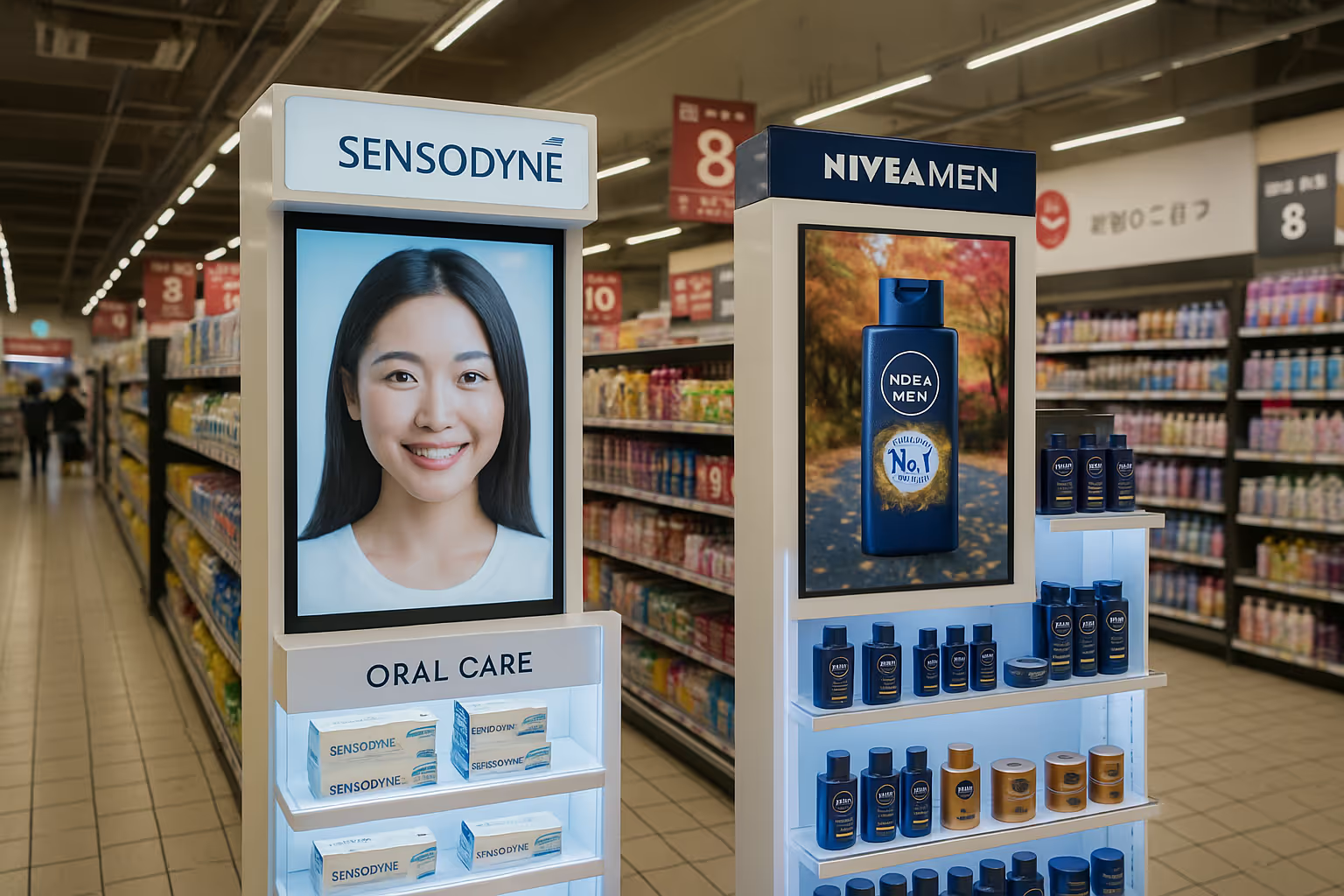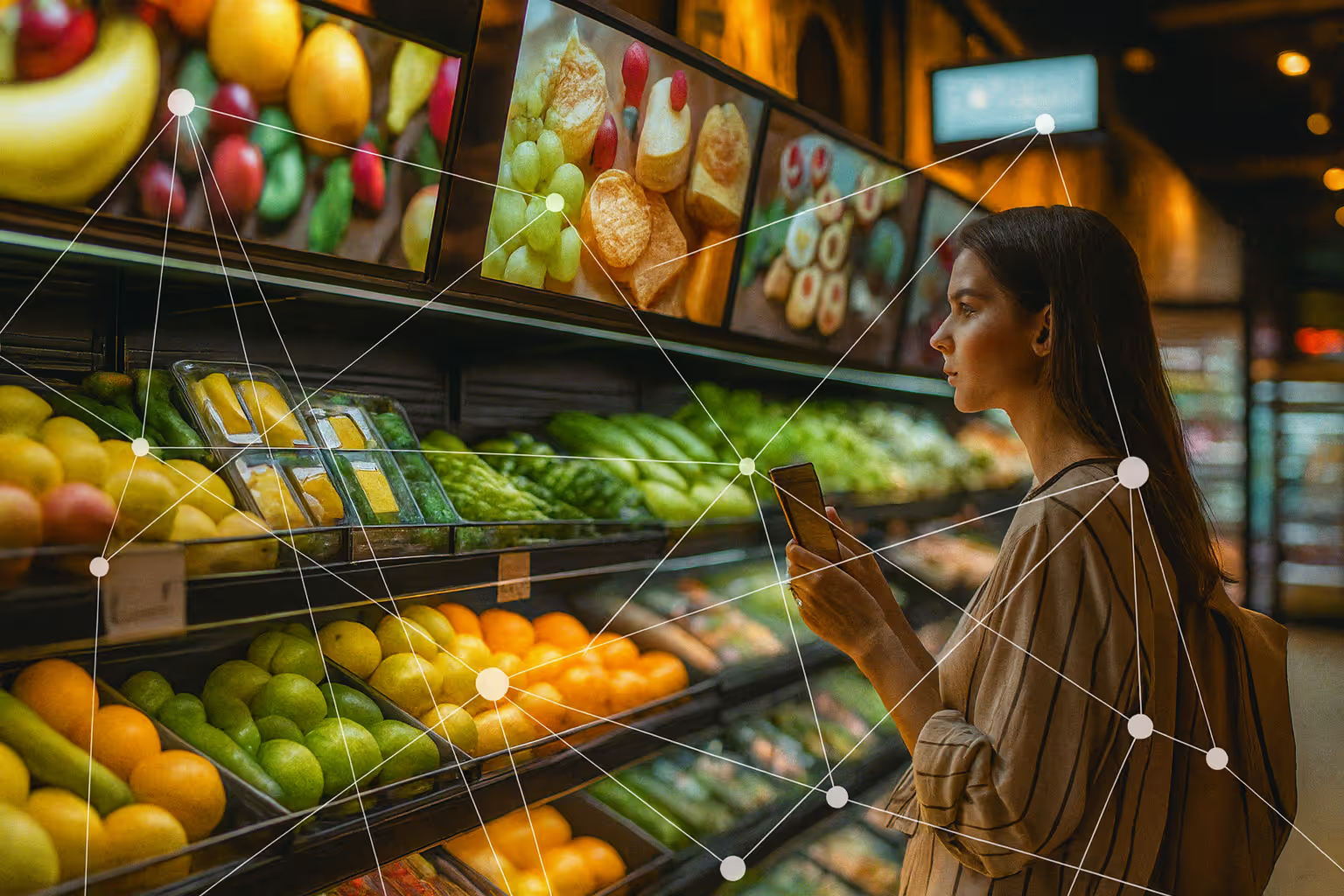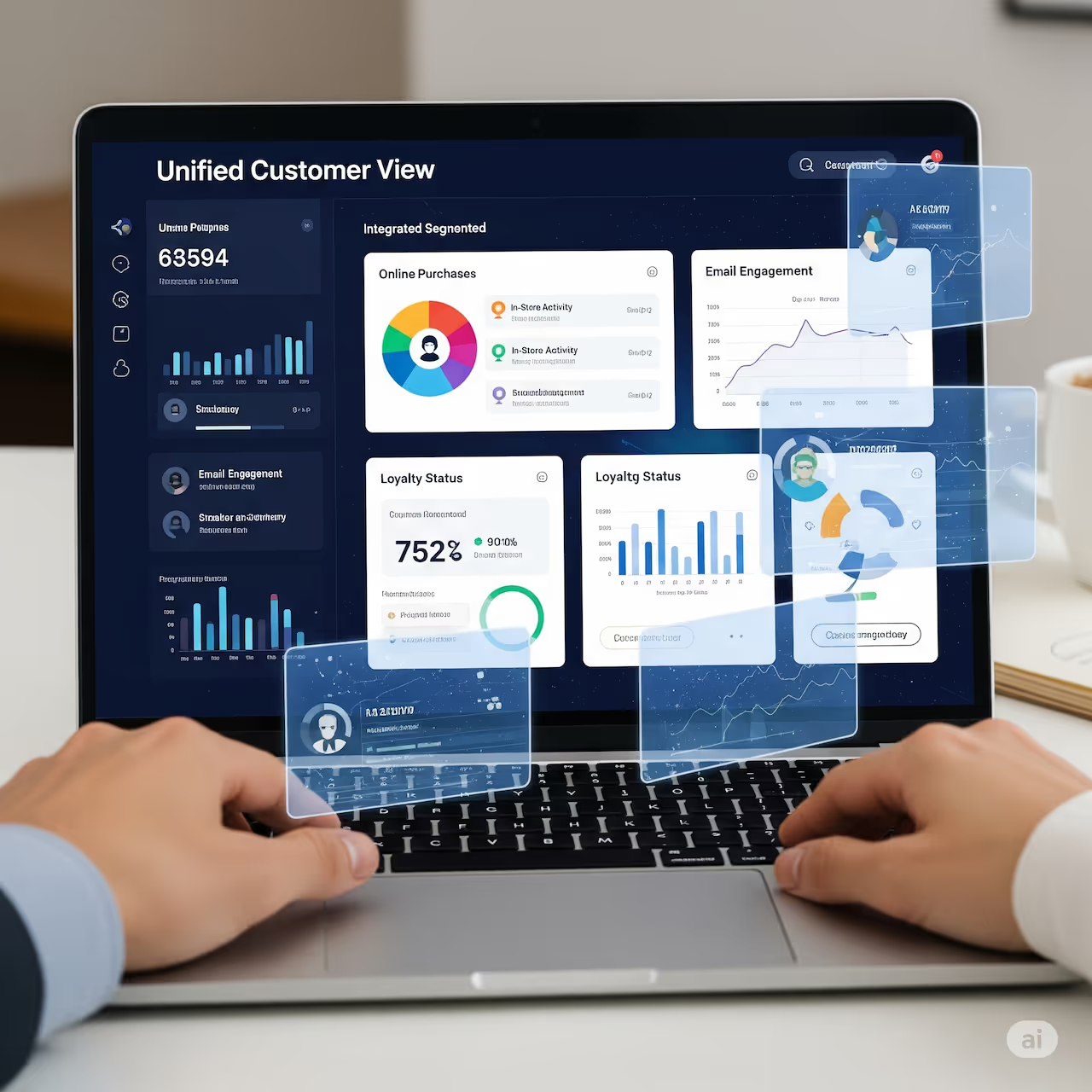The biggest shift in retail advertising isn't happening online—it's happening three feet from the cash register.
Across Asia, retailers are turning freezer doors, shelf edges, and self-checkout screens into monetizable ad inventory, creating full-funnel in-store retail media networks (RMNs). Beyond digitized posters, they're building measurable, dynamic, high-margin channels embedded into the shopper's path to purchase.
Globally, retail media networks are growing at a 6.4% CAGR, nearing $24 billion in 2025 and set to cross $33 billion by 2030. While online channels made up nearly 80% of RMN market share in 2024, in-store retail media is expected to outpace online growth through 2028, as physical locations become premium inventory that merges experiential engagement with deterministic measurement.
What Is the Market Signal and Why Now?
This shift signals a fundamental rethinking of retail infrastructure. Shoppers are more digital, more mobile, and more ready to interact in-store—precisely why retail media has emerged as a growth engine, not just an ad channel.

Retailers are no longer simply monetizing attention. They're building ecosystems that drive engagement, sales, and loyalty, quietly evolving into media companies. Instead of focusing on CPMs, they’re forging content partnerships that deliver value across the shopper journey.
Performance is being redefined. In-store ads now compete based on SKU-level lift, margin contribution, and real-time sales attribution.
Why now? With 87% of purchase decisions made offline, last-mile advertising has become central to retail transformation. First-party data and footfall analytics are making in-store activation as measurable as digital. Organizations that unify their data are positioning themselves to lead.
Timing matters, delays mean losing first-mover advantage for capturing CPG budgets and building attribution capabilities. APAC markets are accelerating fast: Australia leads in deployment, while Southeast Asia scales rapidly on mobile-first behaviors.
The race for premium real estate is on.
What used to be dead space-checkout aisles, cooler doors, shelving sides, has become some of the most valuable media real estate in the store.
Where performance marketing principles now apply to physical spaces, retailers aren’t just installing screens—they’re building programmable environments.
Cartology, Woolworths’ media arm, operates 400+ in-store displays, with plans for expansion. Bunnings is rolling out 300 LED screens to capture supplier dollars. Indonesia’s Alfamart saw a 105% lift in SKU transactions across five pilot stores.
Sophistication now goes far beyond signage. Retailers are using in-store displays to drive awareness and measure sales lift, integrating POS with CMS for dynamic in-aisle screens, and embedding sensors in carts to track what shoppers see and buy.
In-store RMN spend has crossed half a billion dollars in the U.S., with 45% YoY growth projected for 2026. This momentum is already reflected in APAC, where every month of delay gives competitors a measurable edge.
Why It Matters to Retailers & Brands
Beyond revenue numbers lies a transformation where the "moment of truth" at the point of purchase becomes programmable and measurable.
- New profit stream from existing space. Screens on freezer doors and self-checkouts run high-margin ads, shifting RMNs from cost center to growth engine.
- First-party data as a competitive advantage. Combining demographics and transaction history enables more precise targeting than traditional media—especially for impulse buys.
- Physical spaces adopt digital strategies. Retailers can attribute sales lift to in-store impressions, optimize store-level media budgets, and deploy real-time tactics that mirror online campaigns.
- Enhanced shopper experience builds loyalty. From shoppable video to AI personalization, in-store media fosters engagement over interruption.
- Capturing brand budgets. As organic retail growth slows, retail media becomes a strategic lever. CPG brands are shifting serious dollars toward retailers with strong attribution.
What It Means for the Industry
This proven performance is driving comprehensive changes in how retail media operates, requiring new organizational structures and capabilities.
- Technology convergence: RMN platforms now link signage, POS, loyalty, and cloud dashboards into unified monetization layers that bridge digital and physical.
- Measurement evolution: Metrics like “cost per verified glance” and “in-aisle uplift” are replacing CPMs; foot traffic analytics is now standard.
- Organizational transformation: Siloed teams are giving way to integrated retail media units focused on the end-to-end customer journey.
- Talent shift: Retailers need media-savvy product owners. Agencies must develop offline attribution skills. Brands need teams fluent in RMN strategy.
- Privacy & compliance: Camera-based tracking and basket-level targeting will trigger regulatory scrutiny as personalization deepens.
Early adopters now treat impressions like SKUs—tracked, priced, optimized, and bundled. Retailers like Woolworths publicly report RMN revenue in earnings, signaling in-store media’s rise as a core P&L driver.
What Retailers Should Do Now
These operational shifts create immediate opportunities for organizations ready to act. Smart retailers are building programmable media empires, one screen at a time:
- Audit for media potential. Map high-dwell zones and test for conversion: self-checkouts, endcaps, cooler doors. 7-Eleven Thailand’s 3,000-store network reaches 15 million daily shoppers with closed-loop attribution.
- Unify your data. Integrate loyalty IDs, POS, and footfall analytics before selling inventory. Attribution drives media value.
- Build anchor partnerships. Let CPGs co-fund hardware for exclusive slots and performance testing. Focus on impulse categories.
- Apply digital marketing principles. Sync in-store ads with promotions, optimize timing and frequency, and track sales lift—just like online.
- Choose integrated platforms. Use solutions like Criteo or CitrusAd to manage campaigns across in-store and digital.
- Restructure for monetization. Break down silos across merchandising, digital, and media. Make strategy units accountable for revenue and journey performance.
- Plan governance frameworks. Prepare templates for creative approval, partner access, and consent compliance—especially for basket-level targeting.
The Next Decade Starts Now
Retailers spent the last decade digitizing e-commerce. The next decade belongs to those who digitize the store—turning foot traffic into a performance channel where physical interaction meets data precision.
The future of retail growth lies in last-mile advertising: delivering measurable value for retailers (new revenue), brands (ROI and relevance), and consumers (personalized experiences). Those who move now will own not just inventory, but influence.


.avif)


.avif)